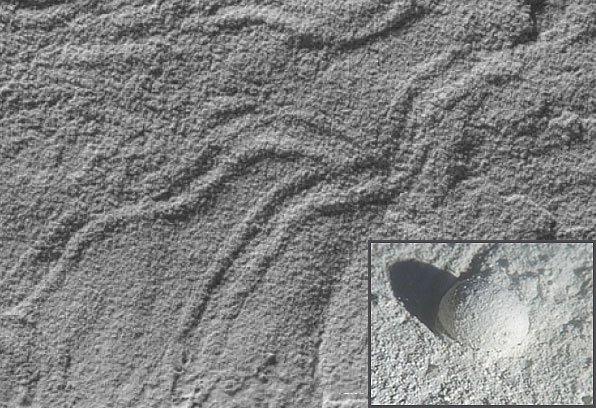Giant Amoeba Tracks
The ancestors of a giant amoeba that roams the seabed today (inset) may have left fossil tracks (Image: Mikhail Matz/University of Texas at Austin )
Fossil tracks on the seabed could be the handiwork of
~”oversized amoebas”
that roamed the ocean. . . ,
Similar tracks preserved in ancient mud have mystified palaeontologists.
They had assumed that the only creatures with the physiology to make such grooves were ancestors of multicelled animals that seemed to evolve at lightning speed in the Cambrian explosion . . . . years ago.
But they have never found any fossils to match the traces.
One theory to explain the anomaly is that the grooves were made by soft-bodied animals that left no skeletal trace in the fossil record. But the oldest of these tracks pre-date the evolution of multicellular life. (sounds like a flaw)
“Pretty much anything within the Precambrian fossil record can in principle be attributed to large protozoans,” says Matz.
Journal reference: Current Biology (DOI: 10.1016/j.cub.2008.10.028)
by Greater Ancestors World Museum on Friday, August 12, 2011 at 10:30am

Comment